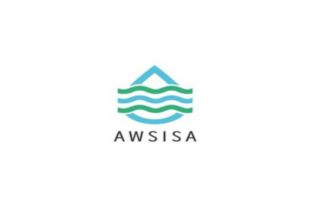In November 2011, Ash Resources played a crucial role in supporting the Department of Water Affairs (DWA) and broke a new record concrete pour, using innovative concrete technology at the De Hoop Dam site. Water&Sanitation Africa reports on this significant achievement.
The De Hoop Dam is located in Limpopo, which sits on the Steelpoort River and forms part of the Olifants River Water Resources Development Project (ORWRDP). The project was launched in June 2004 when government approved the ORWRDP (Phase 2a) – subject to environmental authorization – as a solution to providing water to the Nebo Plateau, where the vast majority of people (some 800 000) have very little access to potable water; as well as encouraging platinum mining in the area, which was originally restricted due to lack of water supply. According to Andrew McKeen, Ash Resources https://infrastructurenews.co.za/wp-admin/edit.phpchannel manager: construction, “DWA is attempting to beat the 2010 record pour of 103 000m3 by setting a new South African record of continuously poured RCC, totalling just over 131 000m³ of IVRCC placed. This equates to 20 000 tonnes of PFA over a 30-day period delivered in bulk tankers, which is a significant undertaking for us.” There have already been a few records set on this massive construction project:• For the first time in South Africa, a grade of ‘High Paste, High Workability’ Roller Compacted Concrete (RCC) is being used.
• It’s a first of its kind in the world where both immersed poker vibration and roller compaction is used together in the placement of what is commonly known as RCC.
• Once built, at 1020 mh long, De Hoop Dam will be the biggest ‘Rollcrete’ dam as well as one of the largest dams constructed in South Africa, over the last 20 years. Environmental management
Since construction began, there has been rigid environmental management control of the project, and Richard Martin, project manager from the DWA, explains that the team working on De Hoop Dam has been adhering to the environmental standards that have been put in place. “The Record of Decision (RoD) of October 2006 required that an independent environmental control officer (ECO) be appointed by the developer, and an Environmental Monitoring Committee (EMC) be formed to monitor compliance. Compliance is currently at 95%, as measured by the ECO in the audits.” Concrete technology
One of the biggest components in this innovative concrete technology is the high grade classified fly ash, DuraPozz®Pro, supplied by Ash Resources, which is assisting in speeding up the construction work, and, at the same time, saving costs on the R1.34 billion dam. In 2008, Ash Resources Matla plant began supply of DuraPozz®Pro to the project, and to date has delivered approximately 120 000 tonnes, against an estimated total requirement of 150 000 to 165 000 tonnes. In a nutshell, of the 925 000 m3 of concrete used on the project, 85% will be RCC incorporating DuraPozz®Pro.
Fly ash has virtually become a standard component of concrete mixes for water-retaining structures throughout the world. It has the benefit of keeping the heat of hydration in mass pours to a minimum, while producing a durable, impermeable concrete with good off-shutter finishes. DuraPozz®Pro is also a key element in the design of a user-friendly, workable concrete mix, which is essential in major fast-track construction projects. This factor is especially relevant at the De Hoop Dam site, where crusher sand has to be used in the RCC mix.
While increasing the speed of construction, the ‘High Paste, High Workability’ RCC mix also provides another significant advantage: it gives the option of dispensing with one of the traditional steps in dam wall building. In the past, the RCC was viewed as basically additional weight to the dam and the critical upstream water barrier was provided by constructing a skin of higher density conventional concrete. The innovative new RCC gives a much more impermeable concrete that approaches the density of the conventional ‘old skin’. Simplifying the construction procedure and saving time, the same concrete mix can be poured from shutter to shutter, upstream or downstream, and normal poker vibrators used to achieve extremely good off-shutter finishes. Aside from the many advantages of fly ash on the De Hoop Dam project, it also has an important ‘green’ element to it. McKeen explains, “The amount of PFA being used in the RCC concrete mixes to construct the wall is between 65% to 70% of the total cementious content. Production of ordinary Portland cement is inherently a major source of ‘greenhouse’ gases. Each tonne of fly ash used as a cementitious binder saves in the region of 1 tonne of CO² emissions. The more that ash is utilised from coal-fired power stations and its benefits engineered for IVRCC mixes, such as those at De Hoop Dam, the more it reduces the amount of ash dumped at or near power stations.” Ash Resources managing director, Daniel Pettersson, comments, “Ash Resources is proud to be part of this ground-breaking dam project, and as one of the most vital components of this amazing new concrete technology, we will do our part to ensure that De Hoop Dam is on track for final site de-establishment in 2012.”Impressive facts about the construction of the dam
•During a pour, about 250 m3 of concrete an hour is placed, which is roughly one truck of RCC per minute.
•Over 3 000 000 tonnes of stone was crushed at the quarry to provide the stone and sand.
•The actual quarry is the size of three rugby fields and is 30 metres deep.
Why is fly ash used as a mix for water-retaining structures?
Fly Ash has, quite literally, become a standard component of concrete mixes for water-retaining structures throughout the world – it has the benefit of containing the heat of hydration in mass pours to a minimum, while still producing a durable, impermeable concrete with good off-shutter finishes.







